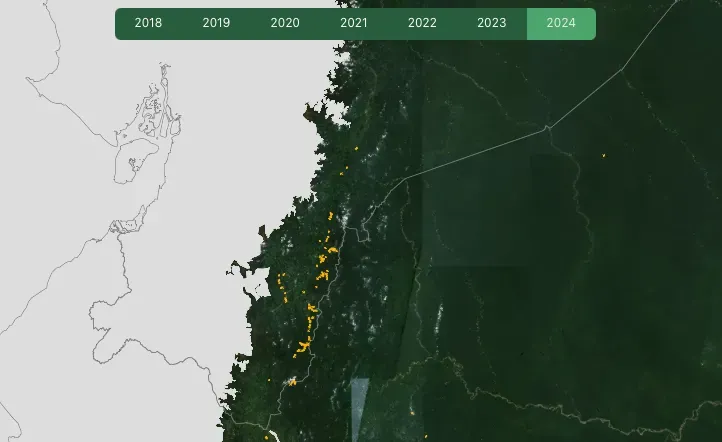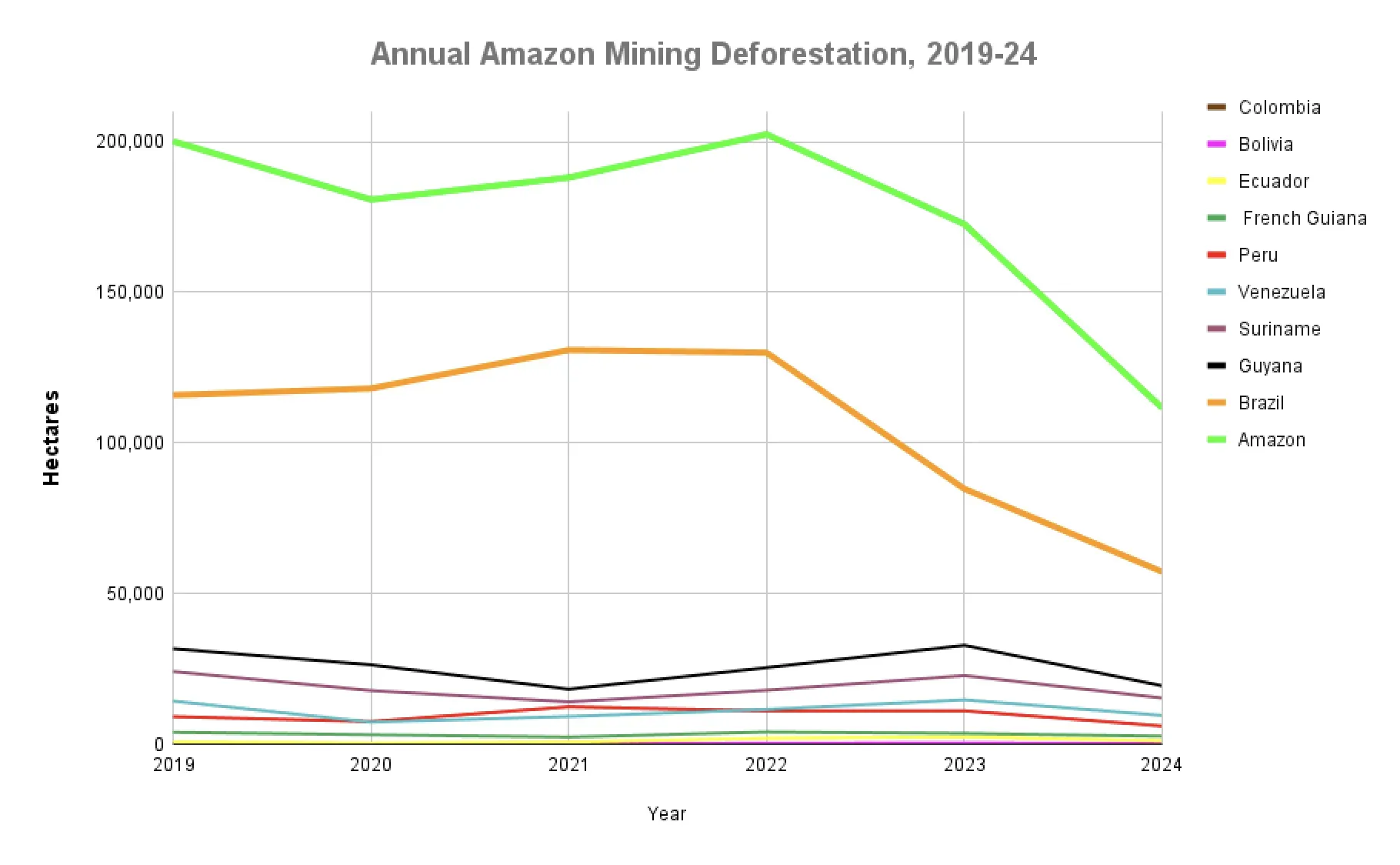Journalist Resource
 May 1, 2025
May 1, 2025
How Journalists Can Use Amazon Mining Watch To Find Leads
Amazon Mining Watch (AMW), built in alliance with Earth Genome and Amazon Conservation, is a powerful tool to monitor and report on gold mining and its impact on the Amazon rainforest. Powered by artificial intelligence and updated yearly, AMW analyzes satellite imagery to track mining-related deforestation across all nine Amazonian countries.
Journalists working with the Pulitzer Center have used AMW to track the relationship between clandestine airstrips in the Amazon and the illegal exploitation of gold mines, also revealing that destruction from mining in an Indigenous territory was three times more extensive than the government estimated. The work was published by media outlets in Brazil, Peru, Spain, Venezuela, and the United States.

As a nonprofit journalism organization, we depend on your support to fund coverage of Indigenous issues and communities. Donate any amount today to become a Pulitzer Center Champion and receive exclusive benefits!
If you're a journalist reporting on environmental issues, Indigenous rights, supply chains, or economic drivers of deforestation, AMW offers many insights and story angles. The most recent data, covering the year of 2024, was recently update in the platform and now users can compare the affected areas by mining in the Amazon since 2018. Here are five key highlights to guide your reporting:
1. Cumulative impact: Over 2 million hectares lost
Since AMW’s tracking began in 2018, more than 2 million hectares of forest have been lost to mining across the Amazon. Gold mining is actively causing deforestation in all nine countries of the Amazon. This impact is concentrated in three major areas: southeast Brazil, the Guiana Shield, and southern Peru. In these areas, there has been an increase by over 50% in the past six years. Although the annual rate of new deforestation has slowed, the cumulative impact continues to grow, illustrating a long-term degradation of critical ecosystems.
Story idea: Visualize the cumulative footprint of mining in the Amazon and investigate the long-term consequences for climate change, biodiversity, and local livelihoods.
2. Gold prices are soaring—and so is mining pressure
The price of gold has skyrocketed, exceeding $3,000 per ounce in early 2025. In times of global economic uncertainty, gold becomes a safe financial bet, pushing up demand. As a result, small-scale and often illegal gold mining continues to drive widespread deforestation across the Amazon.
Story idea: Investigate how fluctuations in global commodity markets — like gold — are creating ripple effects in the Amazon, biodiversity and Indigenous communities.
3. Ecuador: A new hotspot for mining-driven deforestation
While Brazil, Peru, Guyana, Suriname, and Venezuela have long been hotspots for mining deforestation, AMW data shows Ecuador is rapidly emerging as a new front.
Story idea: Use AMW to track emerging mining sites in Ecuador and spotlight how new mining corridors are opening up in sensitive areas.


4. Mining-driven deforestation decreased in Brazil since 2022
There’s a glimmer of good news: After peaking in 2022, the rate of mining-related deforestation dropped significantly in 2023 and 2024. Brazil—the country responsible for more than half of all mining deforestation in the Amazon—saw a major decline, largely thanks to stronger enforcement efforts following the return of the Lula administration.
Story idea: Analyze the effectiveness of environmental law enforcement efforts in Brazil and explore whether similar strategies could work elsewhere in the Amazon region. Another idea is to see if mining-related deforestation in Brazil is spilling across borders into other countries.

5. Indigenous territories remain on the frontlines
Mining is not only expanding geographically, but it is disproportionately impacting Indigenous communities. AMW data shows that over one-third of all mining deforestation occurs within protected areas and Indigenous territories. In Brazil, Indigenous lands like Kayapó, Munduruku, and Yanomami have suffered significant impacts, although some areas are now seeing a reduction in new mining activity.
Story idea: Report on Indigenous-led resistance and legal battles to defend territories against illegal gold mining, and how Indigenous knowledge could be key to conservation efforts.
AMW will publish quarterly and annual updates, as well as country-specific deep dives. AMW will integrate a Mining Impacts Calculator that will allow assessing the social and environmental damage caused by gold mining in the Amazon. With the tool and its reports, AMW allows journalists to quickly spot new mining hotspots, track enforcement actions and their effectiveness, and follow the evolving impact on Indigenous territories. Read the MAAP report, a satellite-based monitoring program within Amazon Conservation, to learn more.









